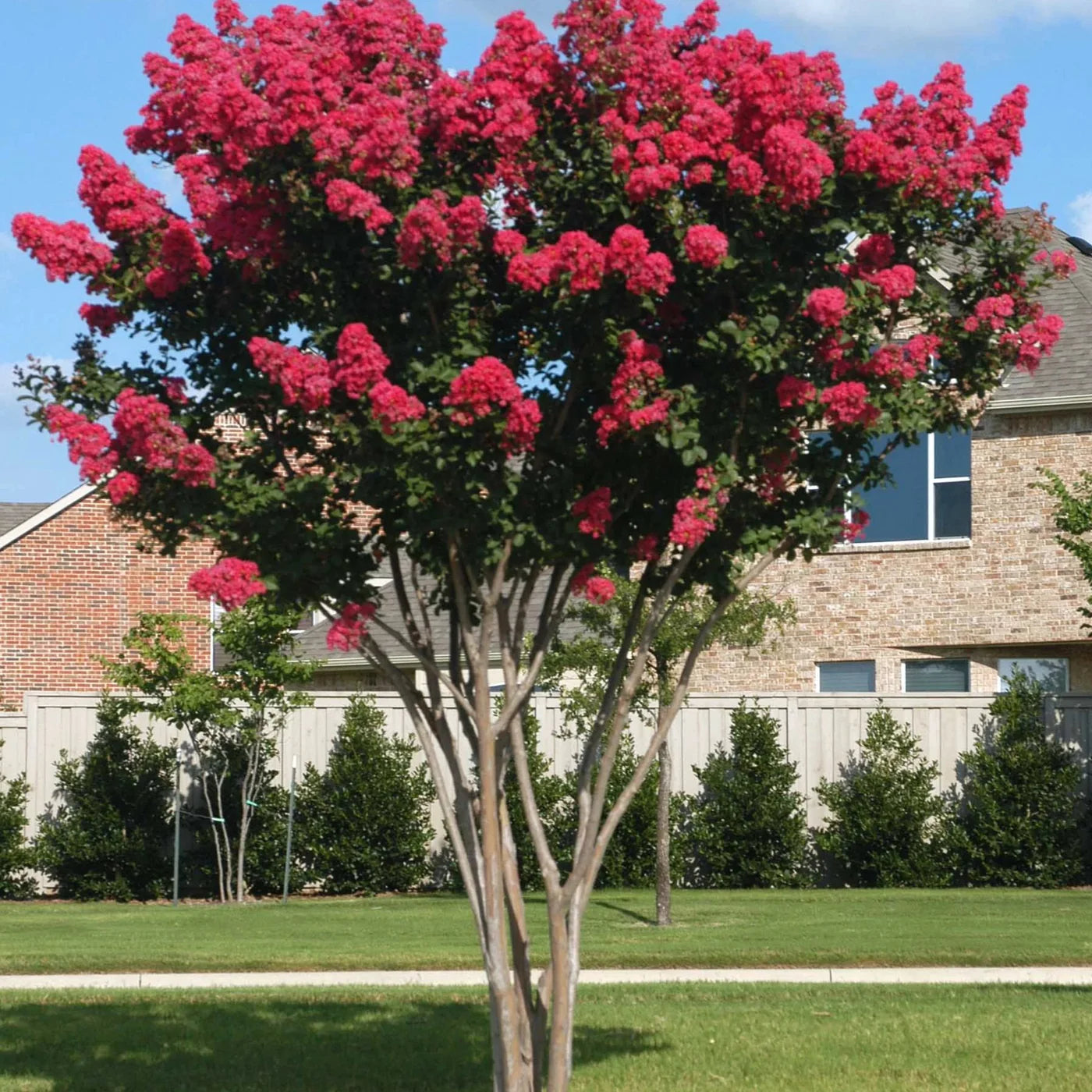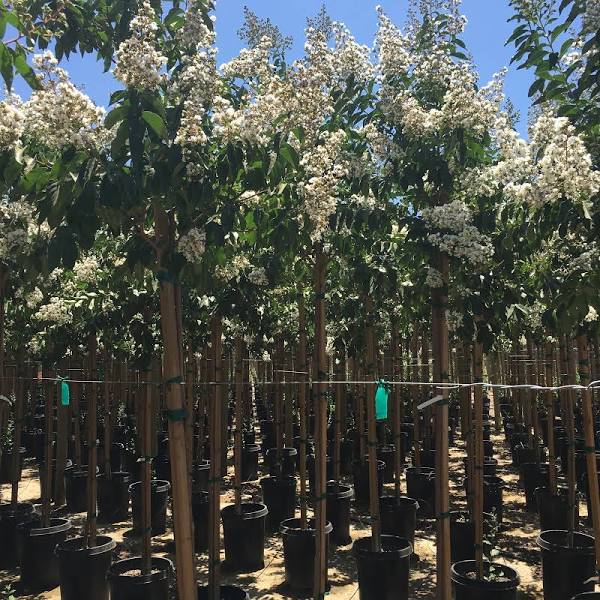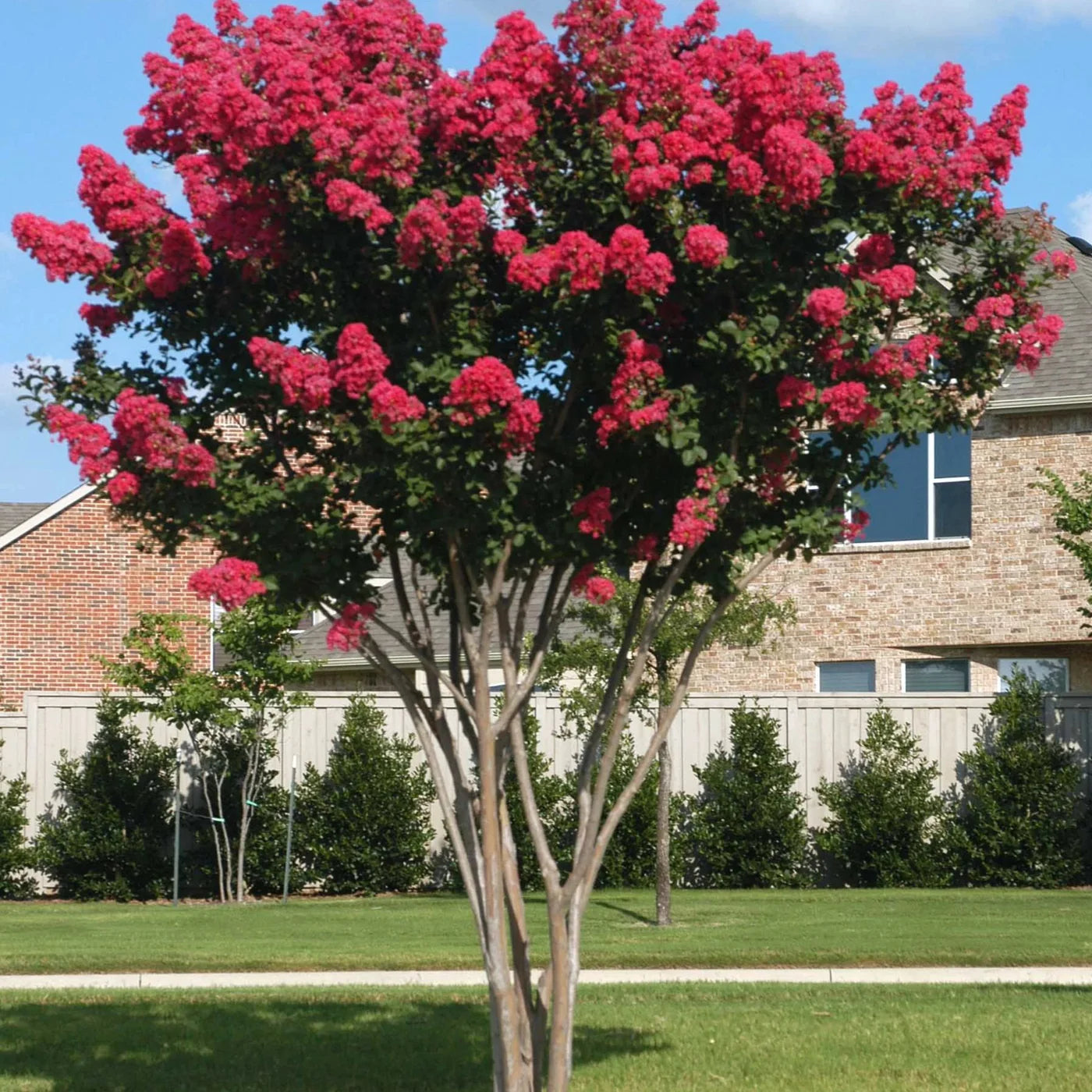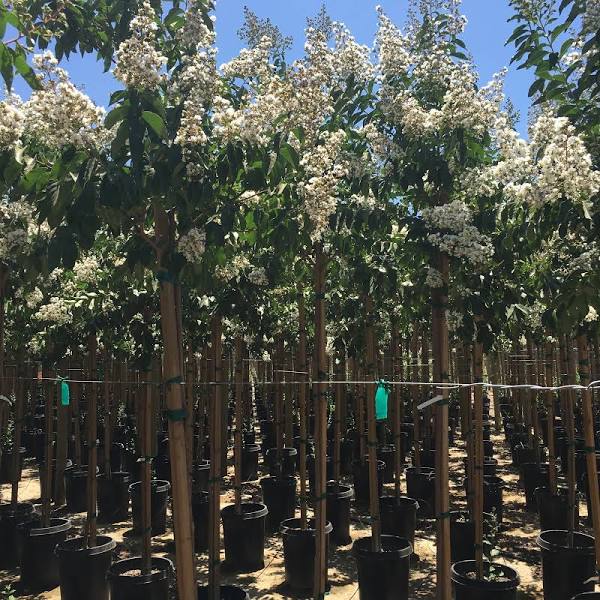
Delivery & Installation
-

Use code DBD and get 10% on entire delivery ONLY orders (1-3 Days)* Discount not Good with Installed orders Minimum order $150
-
$250.00 + FREE delivery & Installation
All orders of $250.00 and more qualify you for FREE delivery & Installation (Hillsborough, Pinellas, Manatee and Pasco Counties ONLY)
Plant It Tampa Bay
Crape Myrtles
Couldn't load pickup availability
Crape Myrtles - Assorted
The Crape Myrtle tree, also known as Lagerstroemia, is a popular ornamental tree cherished for its vibrant and long-lasting blooms. Native to Asia, this deciduous tree is a staple in many Southern U.S. landscapes due to its heat and drought tolerance.
Crape Myrtles are renowned for their showy summer flowers that come in a variety of colors, including pink, purple, red, and white. The blooms are crinkled, resembling crepe paper, hence the name. These trees can bloom for up to 120 days, providing a splash of color when many other plants are not in season.
Beyond their beautiful flowers, Crape Myrtles have a unique, exfoliating bark that peels away to reveal a smooth and colorful trunk underneath. This feature adds winter interest to the landscape when the tree is leafless.
Crape Myrtles range in size from small shrubs to large trees, reaching heights of up to 30 feet. They are versatile and can be used in various landscape applications, including as specimen trees, in borders, or as privacy screens.
Caring for a Crape Myrtle involves regular watering, especially during dry periods, and pruning in late winter to promote a more abundant bloom in summer. They prefer full sun and well-draining soil.
In summary, the Crape Myrtle is a stunning, low-maintenance tree that offers year-round interest, making it a valuable addition to any garden.
- Crape Myrtle trees, known for their vibrant, long-lasting blooms, come in a variety of colors including pink, purple, red, and white, adding a splash of color to any landscape.
- These trees have a unique, exfoliating bark that peels away to reveal a smooth, colorful trunk, providing visual interest even in winter months when the tree is leafless.
- Ranging in size from small shrubs to large trees, Crape Myrtles are versatile and can be used in various landscape applications, such as specimen trees, borders, or privacy screens.
- Crape Myrtles are heat and drought-tolerant, making them a popular choice in many Southern U.S. landscapes. They prefer full sun and well-draining soil for optimal growth.
 |
Advantages:
Easy To Grow Low Maintenance Disease resistant Thrives in the hottest and sunniest locations Very drought resistant for low-maintenance gardens |
 |
Grow Best:
|
 |
Ideal position:Full Sun 6 + Hours best |
 |
Water:Water regularly - weekly, or more often in extreme heat or containers. |
 |
Healthy Temperatures:Warm, tropical vibes of 65-90°F Grown indoors as a houseplant but can be grown outdoors in USDA Hardiness Zones 9-11 |
|
|
Growth Outlook:Height : 6 - 22' Wide: 8 - 14 ' Growth Rate: Fast Plant Spacing: 12' - 18' |
 |
Pet Friendly - yes
|
 |
Qualifies For Free Delivery |
Plant care
Caring for a Crape Myrtle tree involves several steps to ensure its health and longevity:
1. Planting: Choose a location with full sun and well-draining soil. Crape Myrtles thrive in heat and can tolerate drought, but they do best when they get at least six hours of direct sunlight each day.
2. Watering: Water newly planted Crape Myrtles thoroughly and regularly. Once established, they are quite drought-tolerant, but during dry spells, they will benefit from deep watering.
3. Fertilizing: In early spring, apply a slow-release, balanced fertilizer to promote vigorous growth and abundant blooms. Avoid high-nitrogen fertilizers, which can lead to lush foliage but fewer flowers.
4. Pruning: Prune Crape Myrtles in late winter or early spring, while they are still dormant. Remove dead or diseased wood, suckers from the base, and thin out the center to allow sunlight and air circulation. Avoid heavy pruning, often referred to as "Crape Murder," which can lead to fewer blooms and a less attractive tree shape.
5. Pest and Disease Management: Monitor for common pests like aphids and Crape Myrtle Bark Scale. Treat any infestations promptly. Powdery mildew and sooty mold can also be issues. Planting in full sun, proper spacing, and good air circulation can help prevent these problems.
6. Mulching: Apply a layer of mulch around the base of the tree to help conserve moisture, regulate soil temperature, and suppress weeds. Keep the mulch a few inches away from the trunk to prevent rot.
With proper care, a Crape Myrtle can be a beautiful, low-maintenance addition to your landscape.
Plant spacing
How far from the house to plant depends on the variety of crape myrtle tree you choose.
Small ones can go as close as 3 to 4 feet.
Larger crape myrtles need to be placed 10 feet or more away.
If you plant a row of myrtles, place them about 4 to 6 feet or more apart (again, depending on variety).
These plants are way too big for container growing.
Share








 Landscape
Landscape House Plant
House Plant